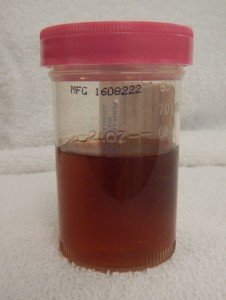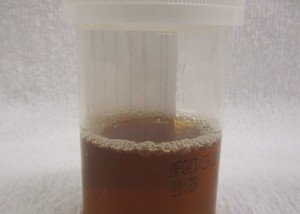Was your urine brown or tea colored soon after having an angiogram to check for a brain aneurysm?
An angiogram relies upon a contrast dye to make things more visible on the imaging study — whether your doctor is checking for an aneurysm or some other kind of blood vessel disorder or even a tumor.
The contrast agent that’s used is iodine-based. It “lights up” blood vessels.
This way, a doctor can identify the telltale bulge of an aneurysm or the presence of a tumor (because they have their own rich blood supply).
“The contrast dyes used in angiograms today are not associated with color changes in your urine,” says Atif Zafar, MD, medical director of St. Michaels Hospital in Toronto, Ontario, and former director of the stroke program at University of New Mexico Hospital.
Why the brown urine?
If your urine is brown or the color of tea or cola – soon after your brain angiogram or at any time – you’ll need to alert your doctor to this.
There are over a dozen causes of dark urine, ranging from benign to life-threatening.
Dr. Zafar is author of the book, “Why Doctors Need to Be Leaders.” His interests include vascular and endovascular neurology, and the neurosciences.
 Lorra Garrick has been covering medical, fitness and cybersecurity topics for many years, having written thousands of articles for print magazines and websites, including as a ghostwriter. She’s also a former ACE-certified personal trainer.
Lorra Garrick has been covering medical, fitness and cybersecurity topics for many years, having written thousands of articles for print magazines and websites, including as a ghostwriter. She’s also a former ACE-certified personal trainer.
.




























